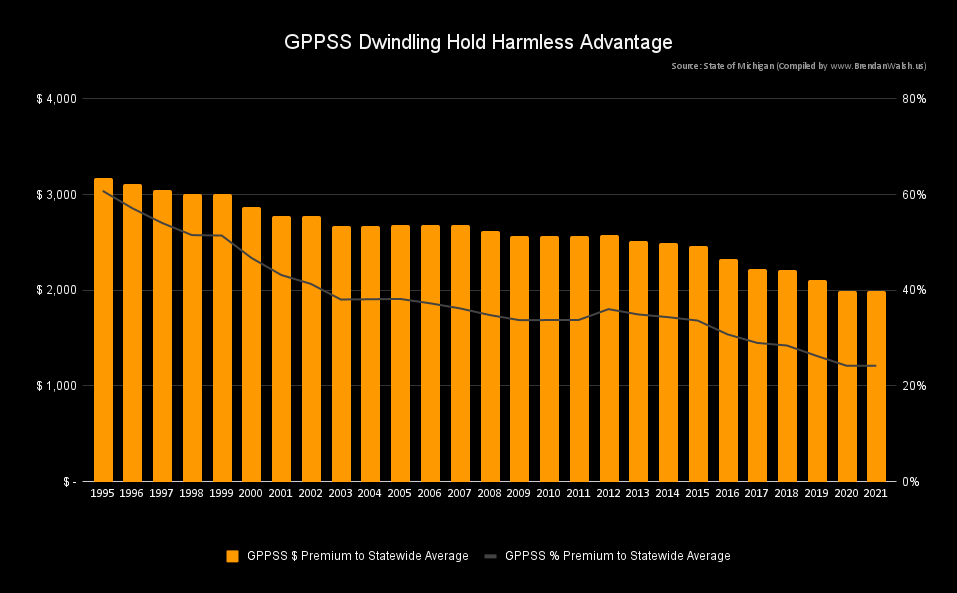Michigan school district’s revenues are, for the most part, student enrollment times the state established Foundation Allowance (FA). In Grosse Pointe the enrollment side of the equation is going really bad, as I covered in my last entry. For the GPPSS, the Foundation Allowance side hasn’t been much better and we ought to talk about that more. Let’s do some math and understand the history.
In 1994, Lansing wanted to close the statewide gap between high spending and low spending districts as measured on a per pupil basis. But some districts were spending far more per pupil than the newly approved Proposal A allowed. As a practical matter, the state knew it could not mandate that higher spending districts immediately reduce their spending. As a result, lawmakers agreed to not harm higher spending districts by allowing them to levy a local “Hold Harmless Millage” which gave roughly 10% of Michigan school districts a per pupil revenue advantage.
But Lansing has never forgotten the original intention to close this gap. Rather than eliminate the Hold Harmless tax levy option, state lawmakers have narrowed the per pupil revenue gap by gradually giving non-Hold Harmless districts larger Foundation Allowance increases, or in the really bad days reducing Hold Harmless district’s revenue. One example was the GPPSS’ annual loss of about $1.6 million in 2010 via the infamous 20J cuts.
To put some numbers to this, in 1995 the GPPSS FA was 61% higher than the statewide average. This year the GPPSS FA premium is just 24% higher than the statewide average (see graph below). Using current enrollment to create a constant basis of comparison (in other words, not commingling revenue loss due to enrollment loss with FA advantage loss), if the GPPSS held the same FA advantage now as it did 1995, district revenue would be nearly $10 million higher in 2021 when also accounting for the 20J fund loss.
Taking the same approach on the enrollment side, enrollment-based revenue loss from 1995 levels has been its own $14 million problem. And these are nominal dollars. In inflation adjusted dollars against a 1995 comparison we are closer to $40 million reduction in revenue. But as I covered before, literally almost all Michigan districts are experiencing similar enrollment loss.
Staying on the FA side of things, the upshot is that the GPPSS’ purchasing power advantage over the vast majority of public school districts across the state is far less than it once was. In other words, the GPPSS has had to make or should have been making or should yet still make budget (really spending) decisions accounting for this dynamic that has been the expressed intent of state law for the past 26 years.
In matters relating to both enrollment (or perhaps population or demographics) and FA, for the most part the district administration and various Boards of Education have had limited control over these factors, but they would and should be more culpable had they not or should they not recognize the impact of these dynamics.
And, oh by the way, no Lansing lawmakers are crying for poor little Grosse Pointe. In their view, we still hold a 24% unfair revenue advantage and I suspect they think the job of Proposal A is not done yet.
